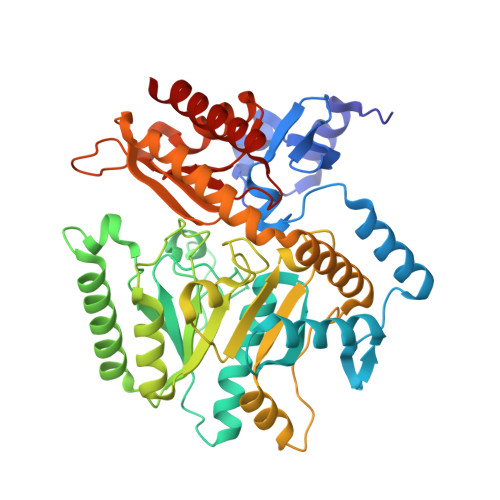Structural basis of substrate recognition by a novel thermostable (S)-enantioselective omega-transaminase from Thermomicrobium roseum.
Kwon, S., Lee, J.H., Kim, C.M., Jang, H., Yun, H., Jeon, J.H., So, I., Park, H.H.(2019) Sci Rep 9: 6958-6958
- PubMed: 31061438
- DOI: https://doi.org/10.1038/s41598-019-43490-2
- Primary Citation of Related Structures:
6IO1 - PubMed Abstract:
Transaminases catalyze the reversible transfer reaction of an amino group between a primary amine and an α-keto acid, utilizing pyridoxal 5'-phosphate as a cofactor. ω-transaminases (ωTAs) recognize an amino group linked to a non-α carbon of amine substrates. Recently, a novel (S)-enantioselective ωTA from Thermomicrobium roseum (Tr-ωTA) was identified and its enzymatic activity reported. However, the detailed mechanism of (S)-enantioselective substrate recognition remained unclear. In this study, we determined the crystal structure of Tr-ωTA at 1.8 Å resolution to elucidate the mechanism underlying Tr-ωTA substrate (S)-enantioselectivity. A structural analysis of Tr-ωTA along with molecular docking simulations revealed that two pockets at the active site tightly restrict the size and orientation of functional groups of substrate candidates. Based on the structural information and docking simulation results, we propose a comprehensive catalytic mechanism of Tr-ωTA. The present study thus provides structural and functional insights into the (S)-enantioselectivity of Tr-ωTA.
Organizational Affiliation:
College of Pharmacy, Chung-Ang University, Dongjak-gu, Seoul, 06974, Republic of Korea.















